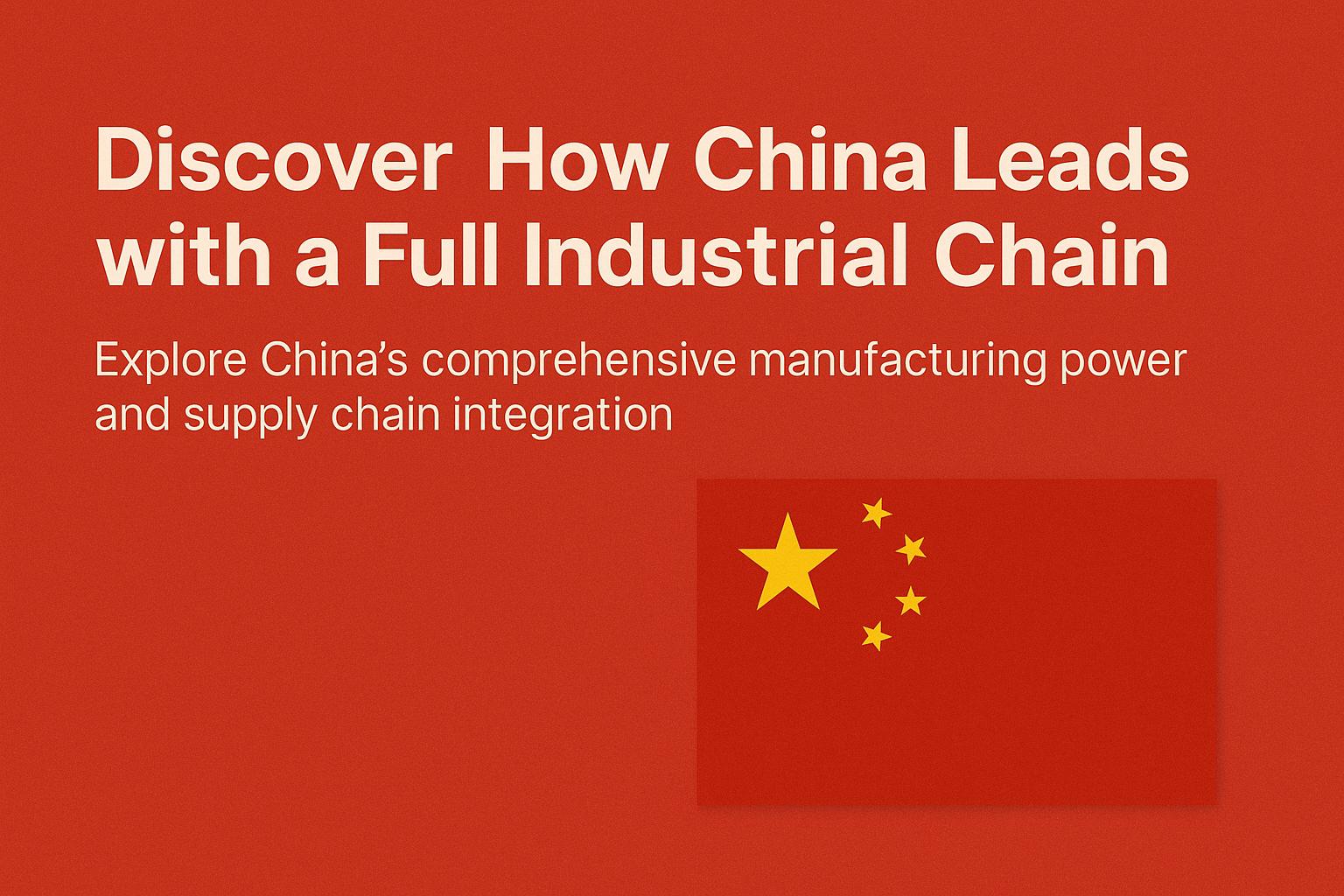Blog
People often say China is the only country with a complete industrial chain. But are there any industries that exist only abroad and not in China?

China’s Comprehensive Industrial Categories: Misunderstood as a “Full Industrial Chain”
Many refer to China as the only country with a complete industrial chain, but this term often causes confusion. According to official definitions, what China truly has is a complete range of industrial categories, which is not the same as a “full industrial chain nation.”
The term “industrial categories” refers to a wide array of sectors within the economy, comparable to subjects in a school system—such as mathematics, language, science, and history—or departments in a government office, such as law enforcement, logistics, and administration.

What Is an Industrial Chain?
An industrial chain (also called an industrial value chain or supply chain) represents the entire process of production, from raw material extraction to finished product assembly, distribution, and after-sales service. A full industrial chain includes
-
Upstream: Raw materials, basic parts, and initial processing.
-
Midstream: Manufacturing and assembly.
-
Downstream: Distribution, marketing, and retail.
When all stages occur within a single country—without relying on external suppliers—that country is said to possess a “complete industrial supply chain.” China is arguably the only major economy today that meets this description across almost every major sector.
What Does a Full Range of Industrial Categories Really Mean?
China’s industrial infrastructure is so well-established that nearly any manufacturing sub-sector can be built upon its existing foundation. This includes sectors such as:
-
Power Generation: Hydroelectric, nuclear, solar, wind—China has invested heavily across all types of power infrastructure.
-
Metallurgy and Chemicals: From basic steel to advanced polymers, these industries supply the raw materials for downstream manufacturing.
-
Mining and Heavy Machinery: China not only extracts its own resources but also manufactures the machinery to do so.
-
Light Industry and R&D: Consumer goods, packaging, textiles, and an increasingly robust research and development ecosystem support the upper tiers of industrial growth.
Think of it as a military unit with complete internal divisions—intelligence, assault, logistics, and command. The strength lies not just in quantity but in systematic completeness.
Are There Gaps in China’s Industrial Capabilities?
Yes—though rare, there are niche sectors where foreign countries still lead, and China temporarily lacks capacity. However, because these gaps fall within the broader industrial framework, China can rapidly mobilize resources to catch up.
For example, in the case of lithography machines, China has already reached second-tier international standards. While not yet on par with global leaders, the capability gap is narrowing.
China vs. Western Nations: Breadth vs. Precision
At present, China excels in being large and comprehensive, while countries like Germany, the U.S., France, and the U.K. concentrate on precision and high-end manufacturing.
-
Western examples: F-35 (USA), Rafale fighter jets (France), aerospace engines, large aircraft.
-
Chinese examples: Hongqi sedans, Yutong buses, and a rapidly growing new energy vehicle sector.
This reflects the difference between having a full-spectrum industrial base and focusing only on top-tier engineering.
Economies of Scale: The Strategic Advantage of China’s Supply Chains
China’s economies of scale give it a key advantage. Unlike many Western countries, which lack a large industrial workforce, China can sustain low-end and high-end production alike.
Take the U.S. for example—despite its economic power and population, producing a cheap T-shirt domestically is nearly impossible due to high labor costs. China, on the other hand, can execute the entire process in-house:
-
Cotton farming
-
Textile fiber production
-
Spinning, dyeing, and button making
-
Final garment assembly
Each step is completed within China, without the need for outsourcing.
The Global Implications of China’s Industrial Chain
China’s industrial supply chain does not just serve its domestic economy—it also anchors global supply chains. Many multinational companies rely on Chinese manufacturers not only for assembly but also for intermediate parts and raw materials.
This dominance gives China both economic and strategic leverage. Disruptions in China’s supply chain—such as those seen during the COVID-19 pandemic—have global ripple effects. As a result, some countries have begun talking about “decoupling” or “re-shoring,” but replicating China’s integrated industrial chain is a long-term, expensive endeavor.
Conclusion: Why China’s Industrial System Is Unmatched
China’s comprehensive industrial categories, vast labor force, and end-to-end supply chain integration provide a structural advantage few nations can match. While it may not always lead in precision tech, China’s strength lies in being both vast and vertically integrated, able to meet demand across high, mid, and low-tier industrial sectors.
This makes China a unique player in the global manufacturing landscape—and explains why the term “China full industrial chain” is often used, even if technically imprecise.
